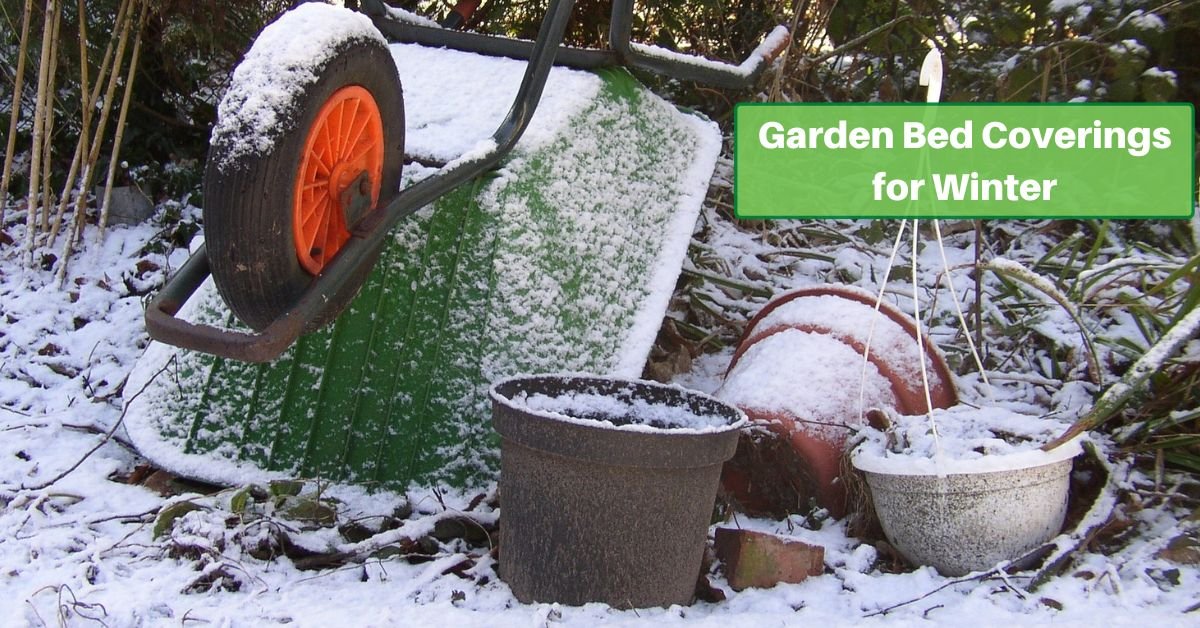As winter approaches, gardeners often find themselves battling against the harsh elements to protect their beloved gardens. The crisp chill in the air and the onset of frost are signals of a seasonal shift and a reminder to safeguard our plants and soil.
In this article, we delve into the importance of covering garden beds during winter, try to understand when they’re necessary, and explore the various options available.
The Need for Garden Bed Protection in Winter
Winter can be a challenging time for garden beds. Frost, snow, and excessive rain threaten plant health and soil quality. Temperature fluctuations, particularly the freeze-thaw cycles, can harm plant roots and dormant plants. The soil, often overlooked, also needs protection. Uncovered, it can suffer from nutrient leaching and erosion, diminishing its quality and fertility.
Understanding your garden’s vulnerabilities is the key to navigating these winter woes successfully. Different plants have varying tolerance levels to cold, and the local climate is crucial in determining the extent of protection needed. For example, a garden in a milder winter region may require minimal covering. At the same time, one in an area with severe frost will need more protection.
Types of Garden Bed Coverings
An effective way to protect your garden beds during winter is through coverings. These coverings provide a physical barrier against the cold and help maintain soil temperature and moisture levels. Let’s explore some of the most effective garden bed coverings.
Mulch: A Gardener’s Best Friend in Winter
Perhaps the most common and versatile winter covering is mulch, which can be made from materials such as straw, bark chips, and leaf mold. Mulch provides a thick, insulating layer over the soil, keeping the ground warmer and reducing the impact of frost. It also helps retain soil moisture, preventing the drying effects of cold winds.
Another advantage of mulch is that it prevents soil erosion caused by winter rains. Finally, as it decomposes, it enriches the soil with nutrients, preparing your garden for spring.
When applying mulch, spread a layer of about 2-4 inches over your garden beds, being careful not to smother the base of the plants. Using organic, seed-free mulch is essential to avoid introducing weeds into your garden.
Burlap and Garden Fabrics: Versatile Coverings for Delicate Plants
Burlap and garden fabrics can be effective for more delicate plants. These materials are breathable while providing protection from frost. They are particularly useful in shielding plants from winter winds and heavy snow. When using burlap or garden fabrics, create a loose tent over the plants or cover the entire bed and secure the edges with stakes or rocks.
However, these coverings should be monitored, especially after heavy snowfall, to ensure they don’t collapse onto the plants. On warmer days, the coverings may also need to be lifted to prevent overheating and allow air circulation.
Plastic Sheeting: For Heavy-Duty Protection
In regions with severe winters, plastic sheeting can offer more substantial protection. It’s especially effective against heavy snow and freezing rain. When using plastic sheeting, it’s crucial to ensure it doesn’t directly touch the plants, as this can lead to moisture buildup and potential rot.
Erect a simple frame over the garden bed and drape the plastic over it, securing the edges to the ground. This setup creates a greenhouse effect, trapping heat and maintaining a more consistent soil temperature. However, plastic is impermeable, so removing or ventilating the covering during warmer days is vital to prevent overheating and allow moisture to escape.
Row Covers and Cold Frames: Tailored Protection for Specific Needs
Row covers and cold frames are excellent options for gardeners looking for a more tailored approach. Row covers, made of various materials from lightweight fabrics to heavier plastics, are laid directly over the plants or supported by hoops. They are ideal for vegetable gardens, protecting against frost while allowing light and moisture to reach the plants.
On the other hand, cold frames are like mini-greenhouses, providing a controlled environment for tender plants or extending the growing season. They can be homemade or purchased, typically with a transparent top and insulated sides. Cold frames protect plants from the cold and harness the sun’s warmth during the day, creating a favorable microclimate.
Considerations When Choosing Garden Bed Coverings
Selecting the right covering for your garden beds is a crucial decision that depends on several factors. The type of plants you’re growing, the local climate, and your garden’s specific needs are vital considerations.
First, evaluate the hardiness of your plants. Some plants only need a light layer of mulch for protection. In contrast, others, especially tender perennials or young saplings, might require more substantial coverings like burlap or plastic sheeting. For vegetable gardens, row covers can provide the necessary warmth and protection while allowing light and moisture to penetrate.
The climate in your region will largely dictate the intensity of winter protection needed. In areas with mild winters, a simple mulch layer might suffice. However, more robust solutions like plastic sheeting or cold frames are advisable in regions with harsh winter conditions, including heavy snowfall and extreme cold.
Another important aspect is the soil type and condition. Sandy soils, which tend to drain quickly, may benefit more from organic mulches that help retain moisture. In contrast, clay soils, prone to waterlogging, might be better served with breathable coverings that allow excess moisture to escape.
Tips for Applying and Maintaining Coverings
Applying and maintaining garden bed coverings correctly is essential for their effectiveness. Here are some tips to ensure your garden is well-protected throughout the winter:
Timing: Apply your coverings after the first frost but before the temperature drops significantly. This will help your plants acclimate to cooler temperatures gradually.
Application Method:
- When applying mulch, distribute it evenly, ensuring a consistent layer thick enough to provide insulation but not so heavy as to suffocate the plants.
- For burlap and fabric coverings, ensure they are adequately secured to withstand winter winds.
- With plastic sheeting, create a sturdy frame to prevent direct contact with plants and ensure adequate ventilation.
Maintenance: Inspect your coverings regularly throughout the winter, particularly after heavy snowfall or rain. Remove any accumulated snow or water to prevent collapse. On warmer days, lifting or ventilating coverings may be necessary to avoid overheating and to allow air and moisture exchange.
Removal: As winter ends and temperatures begin to rise, gradually remove the coverings to acclimate your plants to the changing conditions. This process is crucial to prevent shock from sudden exposure to cold.
Additional Winter Garden Care Tips
Winter garden care involves more than just protecting your garden beds. Here are additional tips to ensure a healthy garden through the winter months:
Pruning: Late winter is an ideal time for pruning many types of shrubs and trees, preparing them for new spring growth.
Winter Planting: Some plants and bulbs benefit from being planted in the winter, as the cold can help break their dormancy.
Soil Testing: Winter is a great time to test your soil’s pH and nutrient levels, giving you ample time to adjust them before spring planting.
Preparing your garden for winter doesn’t have to be daunting. With the proper knowledge and tools, you can effectively protect your garden beds from the harsh winter elements. Whether you choose mulch, burlap, plastic sheeting, row covers, or cold frames, each method offers unique benefits that can help ensure your plants’ survival and health.
Embracing winter garden care is not just about protection; it’s about setting the stage for a vibrant and fruitful spring. By taking proactive steps now, you can look forward to a thriving garden ready to burst into life as soon as the warmer weather returns. Remember, a little effort during the dormant season can lead to bountiful rewards in the growing season.









